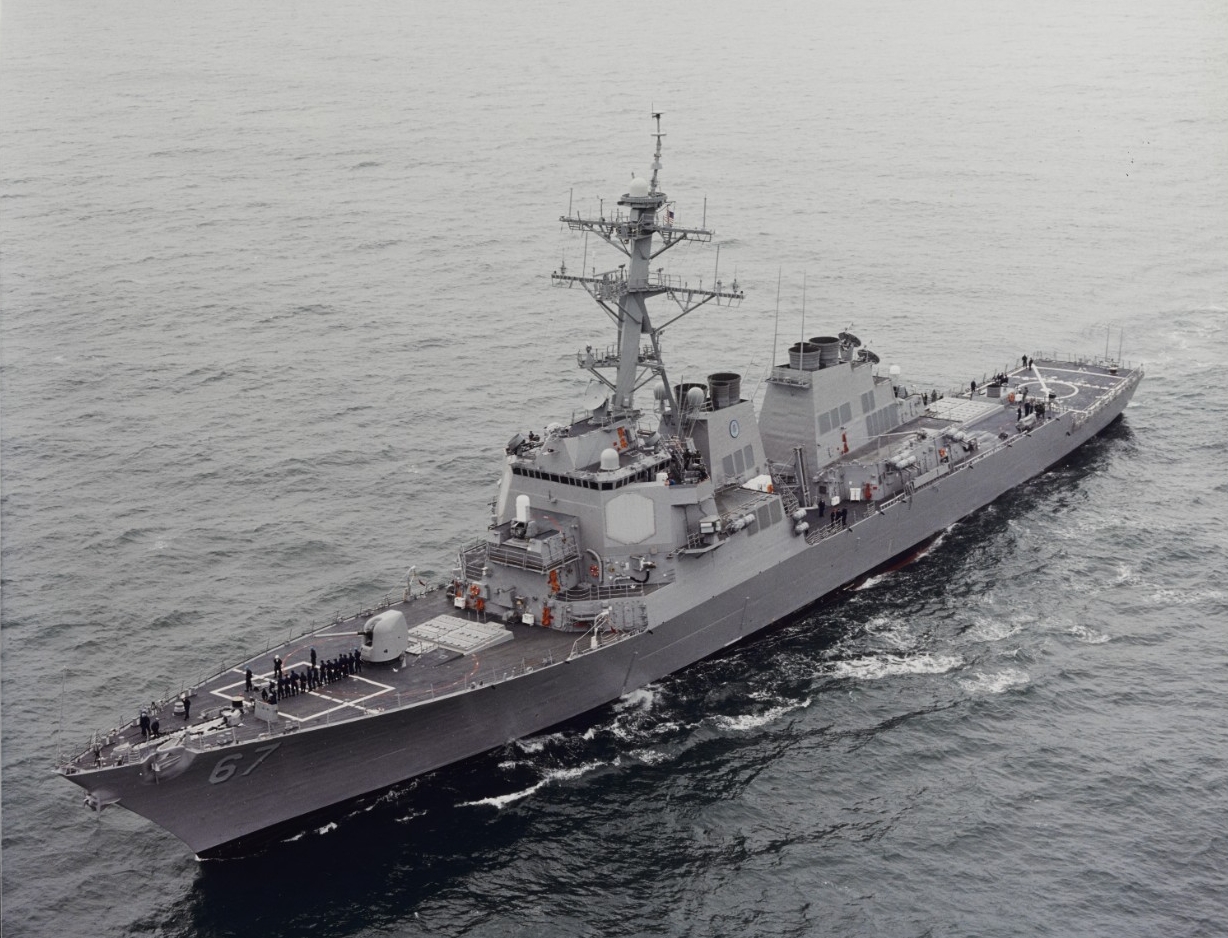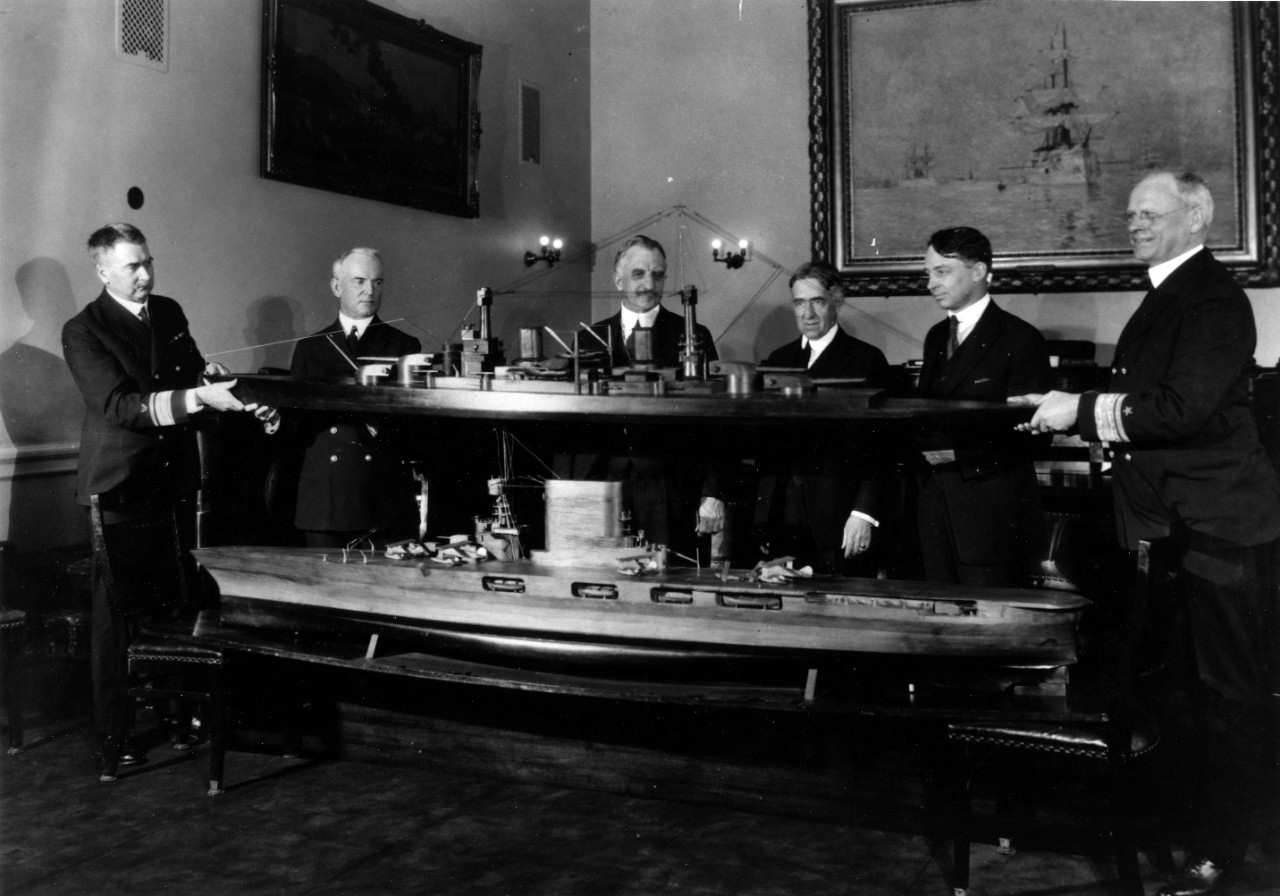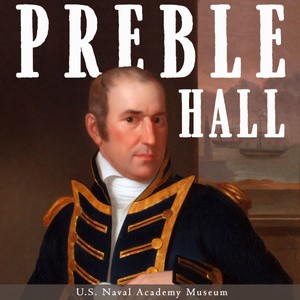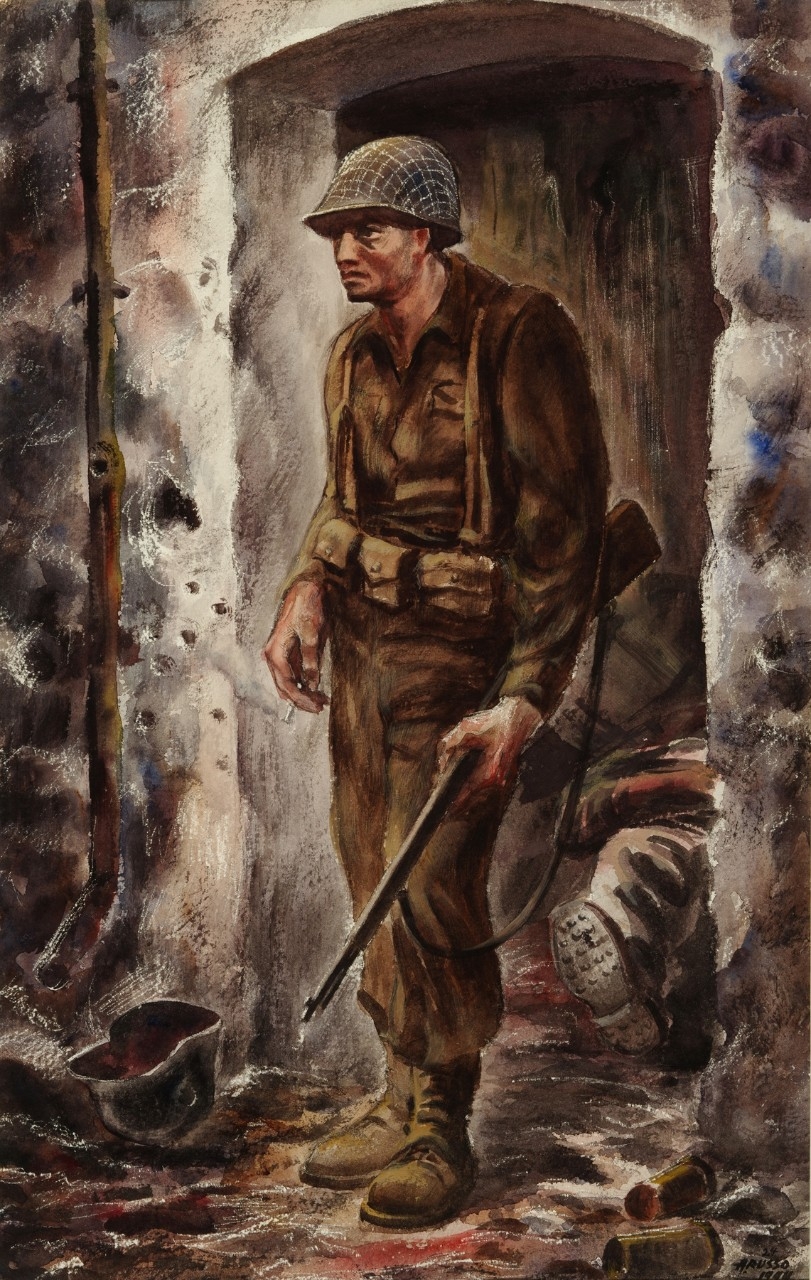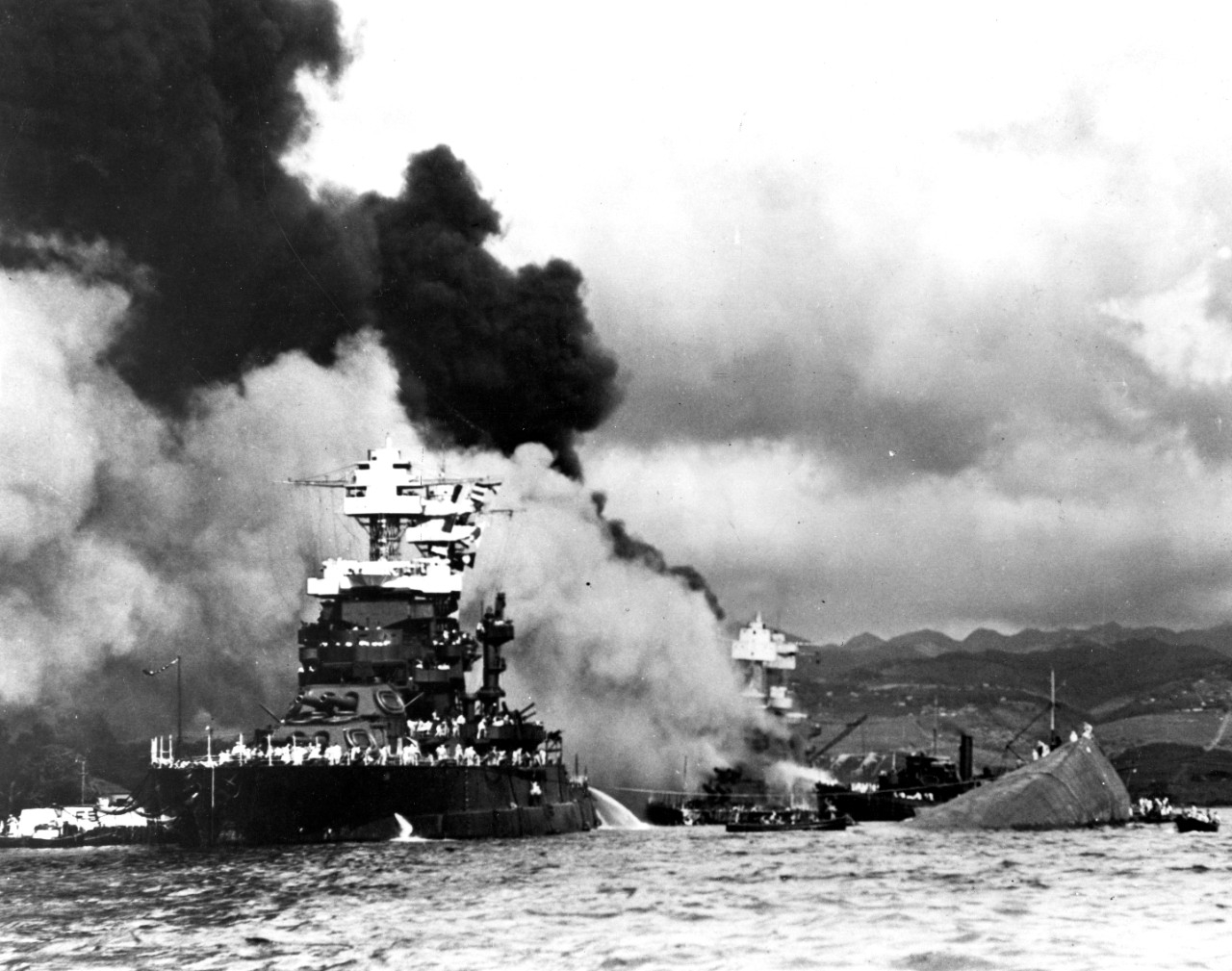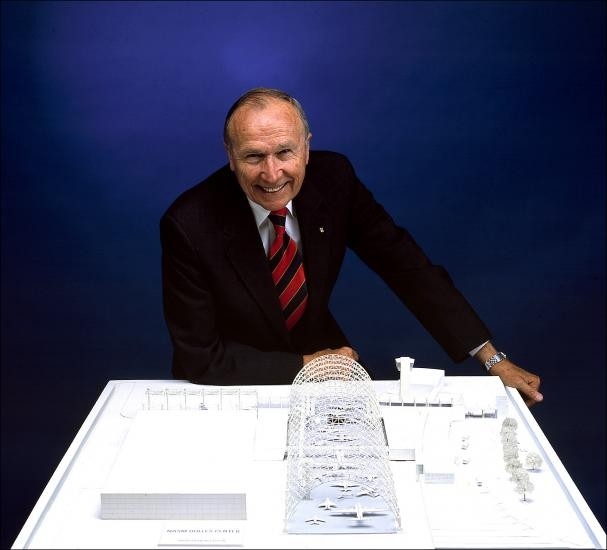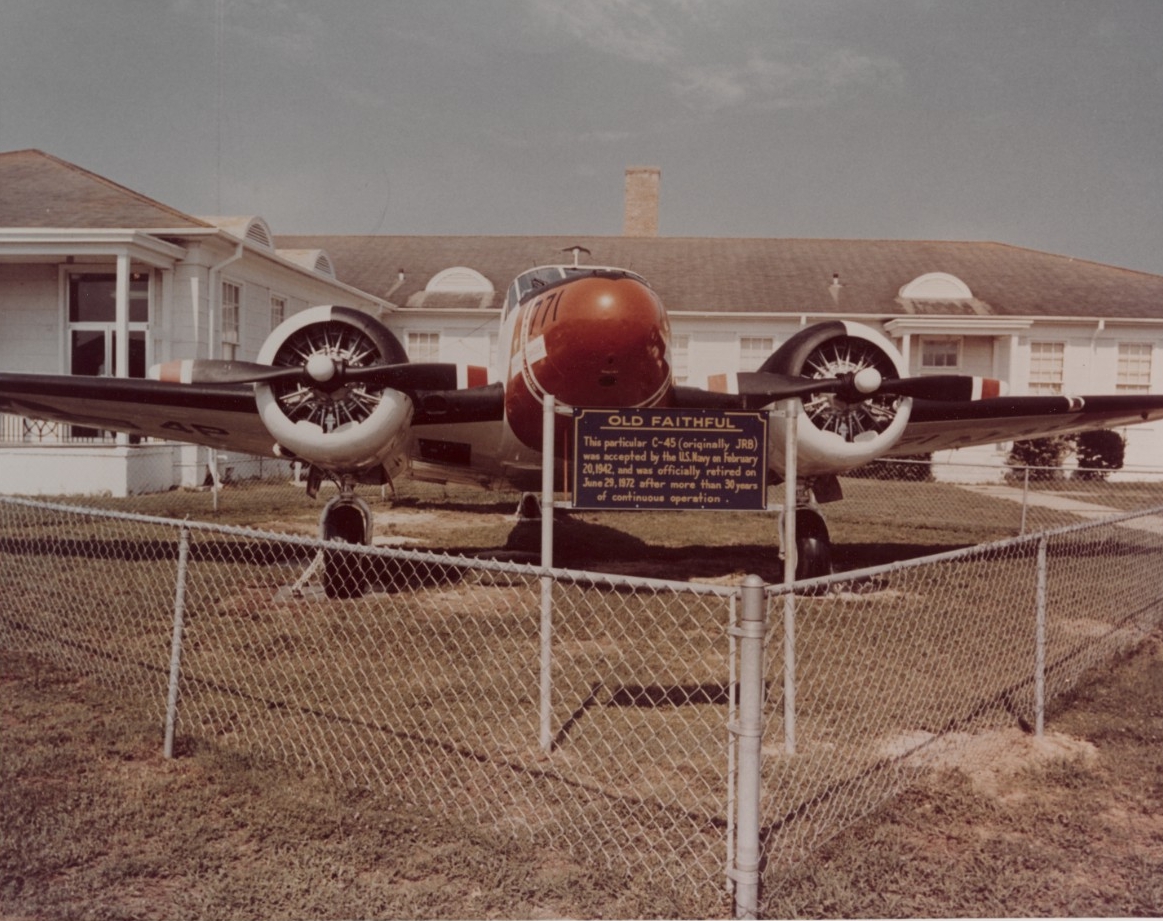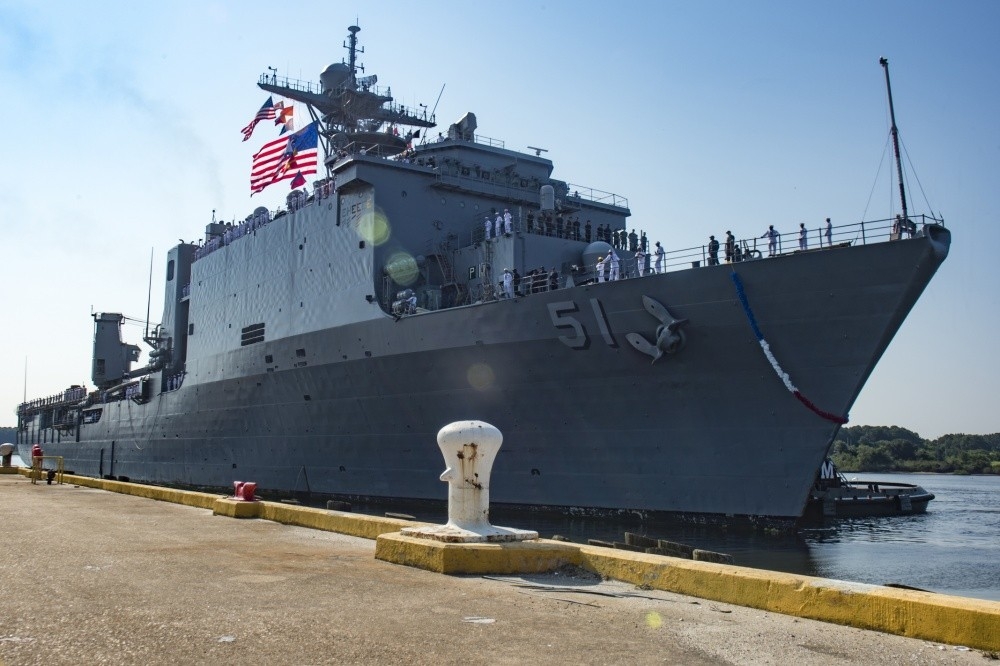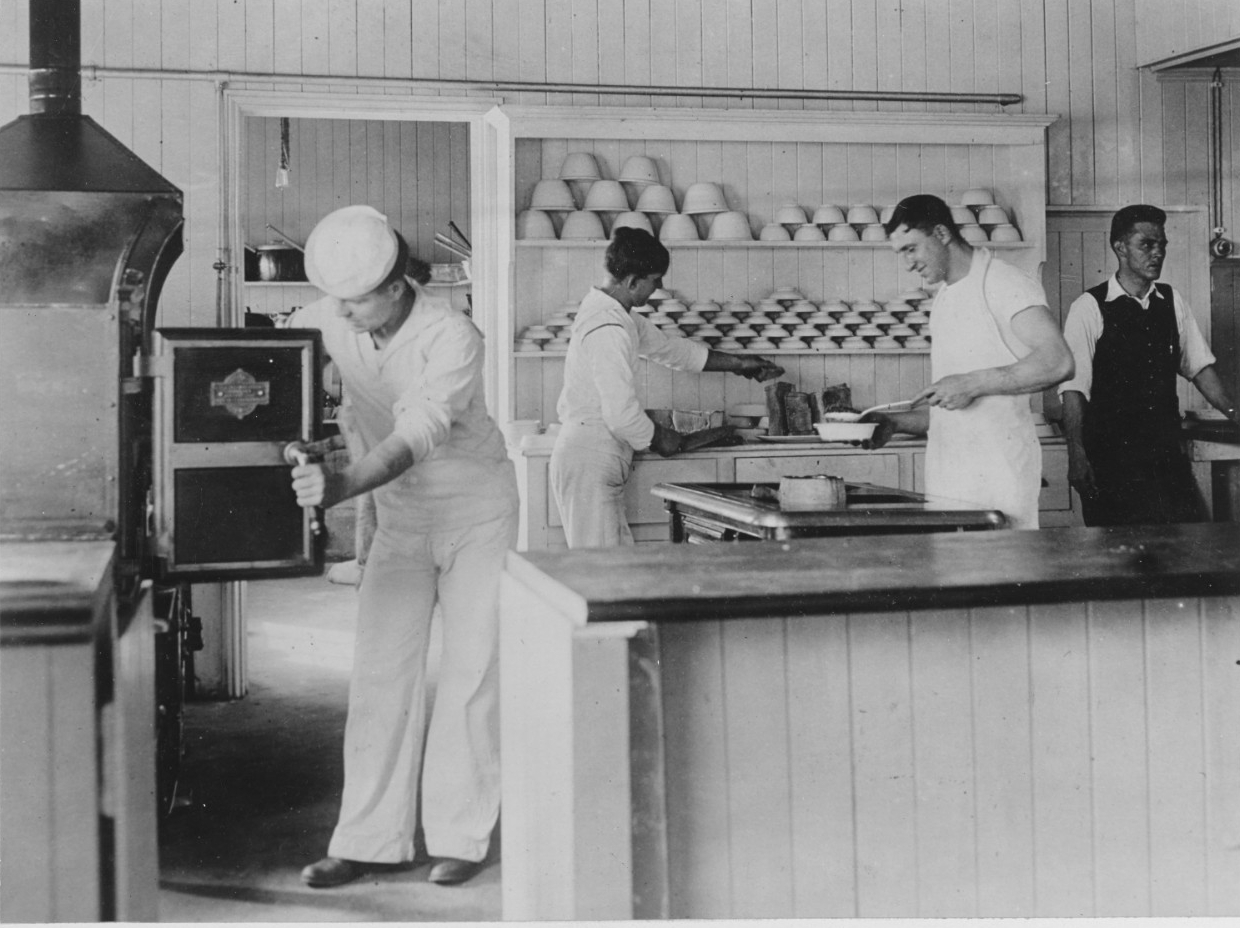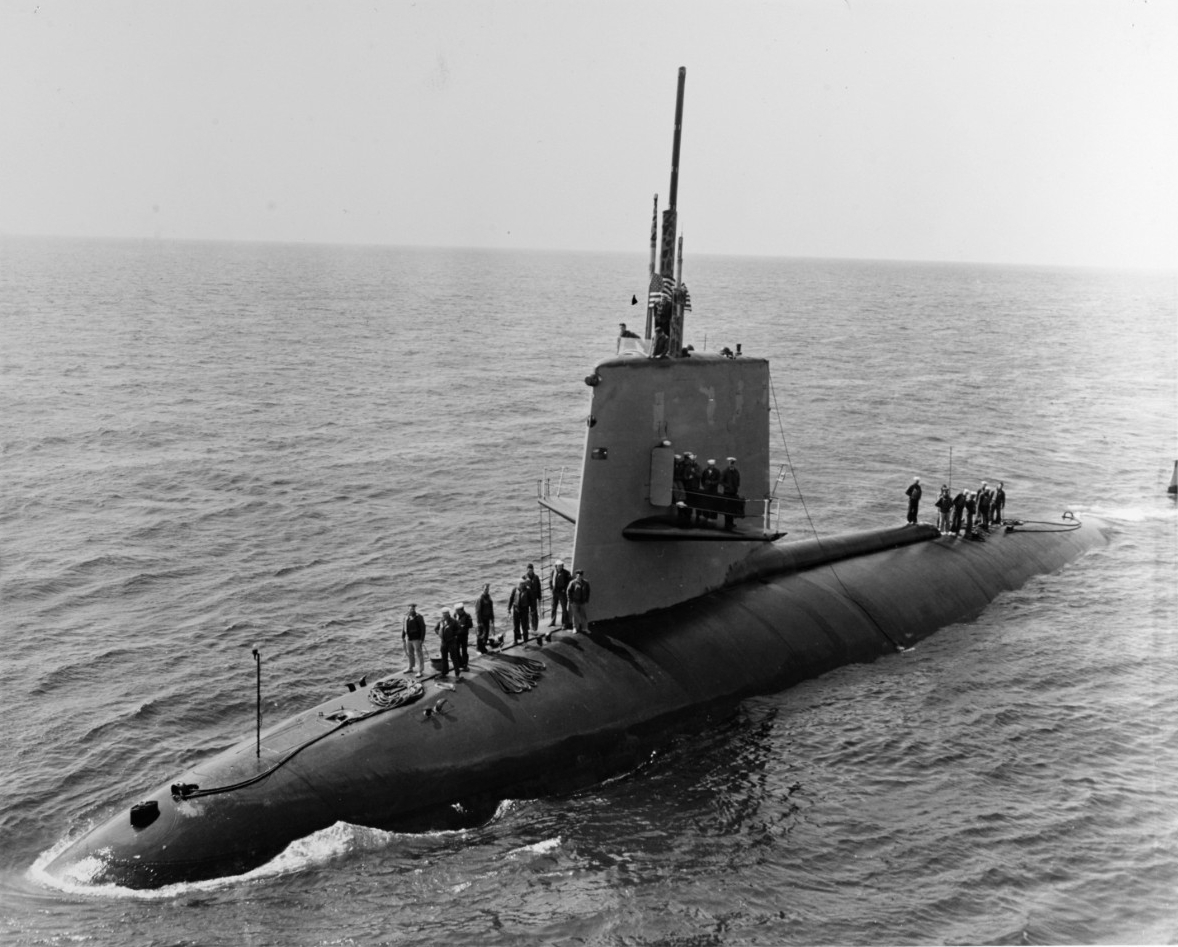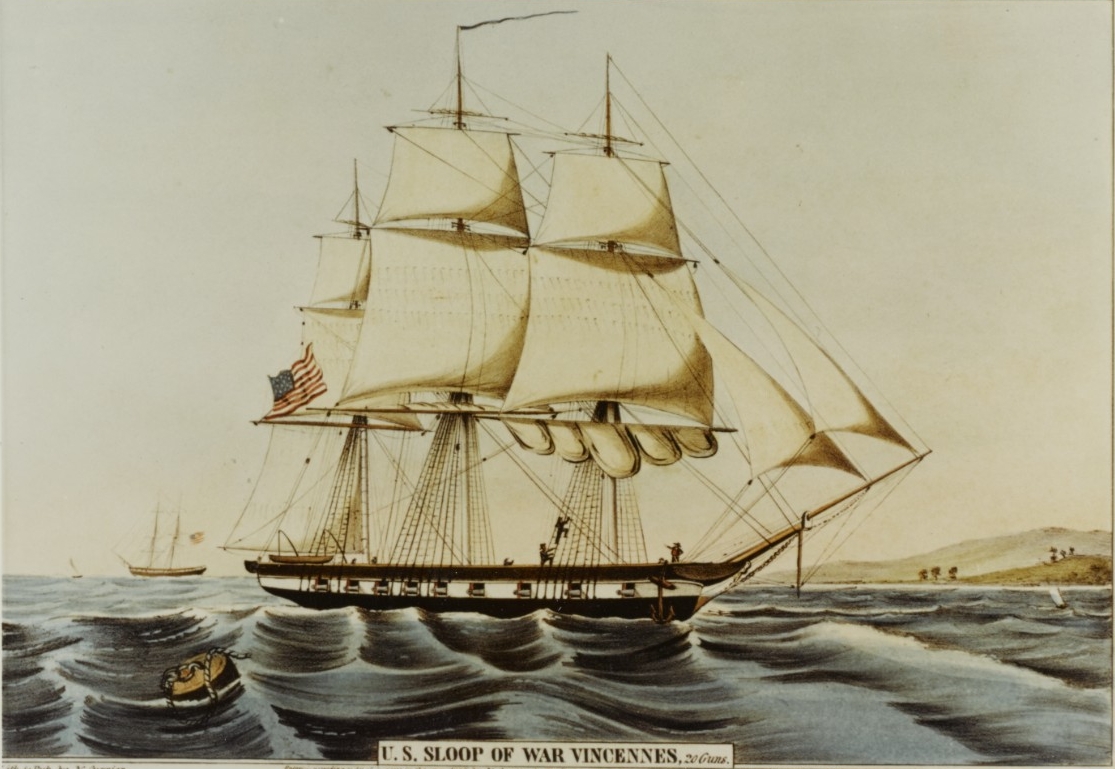Compiled by Brent Hunt, Naval History and Heritage Command’s Communication and Outreach Division
Cole Commissioned—25 Years Ago
On June 8, 1996, USS Cole was commissioned at Port Everglades, FL. The Arleigh Burke–class guided-missile destroyer is named after Medal of Honor recipient Marine Sgt. Darrell S. Cole, a machine-gunner killed in action on Feb. 19, 1945, during the Battle of Iwo Jima. On Aug. 8, 2000, with Kirk S. Lippold in command, Cole was deployed with guided missile frigate USS Simpson and Military Sealift Command (MSC)–manned oiler USNS John Lenthall from Norfolk, VA, to the Mediterranean, Red Sea, Gulf of Aden, and Indian Ocean. On Oct. 12, while Cole refueled at Aden, Yemen, two al-Qaeda terrorists transported an inflatable Zodiac-type speedboat that carried a bomb alongside the destroyer, port side amidships, and detonated the lethal cargo. The explosion blew a 40-foot-wide hole in Cole, but the crew’s valiant damage control efforts saved the ship. The attack killed 17 Sailors and wounded an additional 37 crewmembers. For more on the gallant ship, explore the USS Cole: Determined Warrior page at NHHC’s website.
First Experimental Ship Model Basin Authorized—125 Years Ago
In a naval appropriation act passed June 10, 1896, Congress authorized the first experimental ship model basin, which would be under the supervision of Chief Constructor of the Navy, Capt. David W. Taylor. The Navy used the basin—in Building 70 at the Washington Navy Yard—to monitor new hull designs. For 15 years, Taylor was in charge of the Experimental Ship Model Basin during which time more than 1,000 ship designs for all Navy and many civilian vessels were tested. Shortly before his death on July 28, 1940, the Navy's Research and Development community honored Taylor by naming its new model basin after him. The new model basin was constructed at Carderock, MD, and was dedicated as the David Taylor Model Basin in Taylor’s presence in 1939. The model basin retains his name as a living memorial to the distinguished naval architect and marine engineer.
Preble Hall Podcast
In a recent naval history podcast from Preble Hall, the U.S. Naval Academy’s History Department continues with the third and final installment of This Human Life, which is about the remarkable life of 19th century American adventurer Walter Gibson. The Preble Hall podcast, conducted by personnel at the U.S. Naval Academy Museum in Annapolis, MD, interviews historians, practitioners, military personnel, and other experts on a variety of naval history topics from ancient history to more current events.
U.S. Army Birthday, Flag Day—June 14
More than a year before the Declaration of Independence, the Continental Congress passed two resolutions—commemorating the birth of the American Continental Army and adoption of the flag of the United States. Founded on June 14, 1775, with Gen. George Washington as the first commander-in-chief, the U.S. Army became America’s first national institution and has played a vital role in the growth and development of the United States. Over the course of the U.S. Army’s storied history, it fought decisive battles in defense of our country, including the Battles of Yorktown and Vicksburg, the Meuse-Argonne Offensive, Operation Overlord, and the Battle of the Bulge. Happy birthday U.S. Army!
DPAA Expects to Identify 90 Percent of USS Oklahoma Unknowns by Year's End
The Department of Defense expects to have identified, by year’s end, 90 percent of the exhumed remains of the 388 Sailors and Marines who were killed while onboard USS Oklahoma during the attack on Pearl Harbor. “The identification of 338 individuals, to date, from the USS Oklahoma represents the first successful completion of a project of such scope and complexity,” the Defense POW/MIA Accounting Agency reported in a recent news release. The agency spearheads the effort to identify and account for missing service members lost during World War II and subsequent conflicts. “Nearly 86 percent of the Unknowns from the USS Oklahoma have been individually identified surpassing the original projected estimate of 80 percent,” according to the release. For more, read the article.
Former Naval Aviator Named Director of Smithsonian Museum
On June 13, 1996, 25 years ago, Vice Adm. (Ret.) Donald D. Engen, a World War II naval aviator, who received the Navy Cross, Air Medal, and Distinguished Flying Cross for his valiant service during the Battle of Leyte Gulf, was named the director of the Smithsonian’s National Air and Space Museum in Washington, DC. He served as director for three years before he was killed in Nevada on July 13, 1999, in a glider accident. Engen was born on May 28, 1924, in Pomona, CA. He enlisted in the U.S. Navy Reserve on June 9, 1942. After he was appointed an aviation cadet, Engen completed flight training and on June 9, 1943, was designated a naval aviator. He was commissioned an ensign on the same date. After the war, Engen transferred to the active Navy in 1946 after a short stint as a civilian. He served in a variety of assignments to include participation in the Korean War and Vietnam War. Engen retired from the Navy in 1978.
Aviation Museum Opened Doors 58 Years Ago
On June 8, 1963, the National Aviation Museum opened its doors in Pensacola, FL. The museum, known today as the National Naval Aviation Museum, began modestly in a renovated, wood-frame building constructed during World War II. Capt. James McCurtain, the museum’s first director, displayed eight aircraft that were rotated periodically with others in the 8,500 square-foot space. In March 1964, the Chief of Naval Operations established an executive committee to consider the need to expand the facility due to growing demands placed upon it. New construction appeared to be the only real solution, but the main obstacle was funding. On Dec. 5, 1966, the Naval Aviation Museum Association received tax-exempt status, which allowed it to raise funds in support of the museum unregulated by restrictions of official Navy activities. By 1970, a proposal for a five-phase design to be built over years was accepted. Today, the NNAM is the world’s largest naval aviation museum with more than 150 restored aircraft.
Oak Hill Commissioned—25 Years Ago
On June 8, 1996, USS Oak Hill was commissioned. The Harpers Ferry–class dock landing ship is the second named to honor the home of President James Monroe, where he penned the Monroe Doctrine. The first Oak Hill earned five battle stars for her World War II service, and six more for her service during the Vietnam War. She was decommissioned 1973. Shortly after commissioning, the current Oak Hill, whose motto is “Nations’ Protector,” served as command and control ship in the aftermath of the TWA Flight 800 crash. On her maiden voyage that began in October 1996, Oak Hill deployed to the Mediterranean for a series of exercises and port calls. However, towards the end of the deployment, she was sent with a task force to the North Arabian Sea to put pressure on Iraq to cooperate with UN inspectors. In 2002, Oak Hill deployed to the Persian Gulf in support of Operation Enduring Freedom. She deployed multiple times to the region in support of the Global War on Terrorism. Oak Hill has also participated in several public celebrations, to include the 2011 Independence Day celebration in Boston, MA, with Constitution, and the bicentennial celebration of the War of 1812 in Baltimore, MD. The ship is homeported at Joint Expeditionary Base Little Creek, Norfolk, VA.
U.S. Navy's Soft Sugar Cookie Recipe from WWII, and How to Make it at Home
Sometimes even Sailors have a sweet tooth, and for anyone who has ever wanted to eat like a Sailor in the U.S. Navy during World War II, now you can do so. NHHC recently posted, on its YouTube channel, the Navy’s 1945 recipe for soft sugar cookies. Communication and Outreach Division’s Tom Frezza hosted the video. “I have a few different editions of the U.S. Navy's cookbook and it was during quarantine, so I was looking for something to do and something that we could share with the general public,” he said. “And, well, at the beginning, everybody was cooking at home and I figured, why not break out the cookbook and actually try some of these recipes and make some videos that we could share with the public and see what people thought, and make it so that they could make these at home, as well.” Frezza said he picked soft sugar cookies because its “probably one of the easier ones to make.” It’s likely the reason why Navy cooks often made sugar cookies for dessert. Not only does Frezza explain the recipes that he makes from the Navy cookbooks, he also makes the foods themselves—after scaling down the recipes to more manageable amounts. Most of the original recipes are for about 100 portions. For more, read the article. To learn how to make the cookies, click here.
Webpage of the Week
This week’s Webpage of the Week is new to NHHC’s notable ships. USS Scorpion was laid down on Aug. 20, 1958, by the Electric Boat Division, General Dynamics Corporation, Groton, CT. She was launched on Dec. 19, 1959. Between 1961 and 1968, Scorpion took part in U.S. and NATO operations in the Atlantic and Mediterranean, contributed to the development of nuclear submarine warfare tactics, and deployed for special operations. On Feb. 15, 1968, following an extended overhaul in Norfolk, VA, her homeport, Scorpion again headed for the Mediterranean, where she operated with Sixth Fleet. In May, her deployment ended, and the submarine headed west for Norfolk. On May 21, Scorpion indicated her position to be about 50 miles south of the Azores. Six days later, she was reported overdue. A search was initiated, but Scorpion and her crew were declared “presumed lost” on June 5. The search continued and, at the end of October, the Navy's oceanographic research ship, Mizar, located sections of Scorpion’s hull in more than 10,000 feet of water about 400 miles southwest of the Azores. For more on the Scorpion tragedy, check out this page today. It contains a short history, an image gallery, and other resources.
Today in Naval History
On June 8, 1830, the sloop of war Vincennes, commanded by Master Commandant William B. Finch, became the first U.S. Navy warship to circle the Earth. She departed New York on Sept. 3, 1826, rounded Cape Horn and cruised in the Pacific protecting American merchantmen and whalers until June 1829. She then received orders which sent her first to the Society Islands, the Sandwich (now Hawaiian) chain, and ultimately to Macao, China, which she reached early in 1830. From Macao, she sailed to the Philippines and then to Manila on Jan. 29. She was underway again on Feb. 5, sailed across the Indian Ocean and arrived at Capetown, South Africa, 56 days later. After a brief stop at St. Helena, Vincennes returned to New York. The ship served 41 years in both peace and war. Vincennes compiled an outstanding record of unprecedented achievements in polar exploration, global cartography, and commercial expansion and protection. Her career paralleled that of the young, expanding, and confident American nation.

